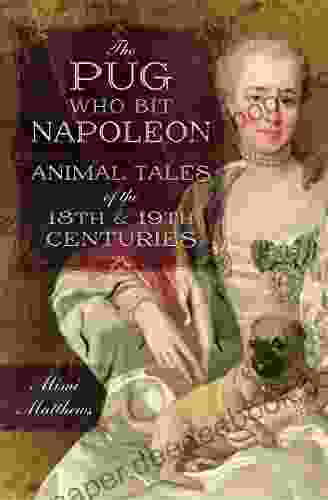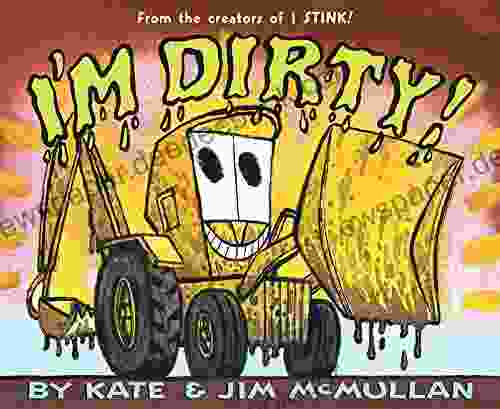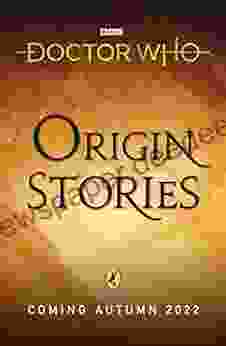Animal Tales of the 18th and 19th Centuries: A Literary Exploration of Nature, Morality, and Social Commentary

In the annals of literary history, animal tales have held an enduring fascination, captivating readers across generations with their whimsical charm, profound wisdom, and timeless appeal. During the 18th and 19th centuries, a golden age of animal literature emerged, producing a rich tapestry of stories that both entertained and enlightened readers. From the timeless fables of Aesop to the enchanting creations of Beatrix Potter, animal tales of this era showcased the boundless creativity of writers and the enduring power of animal characters to reflect human experiences and values.
The Literary Significance of Animal Tales
Animal tales have played a significant role in literary history, transcending cultural and geographical boundaries. As a genre, they offer a unique blend of entertainment and instruction, using anthropomorphic characters to explore complex themes and impart valuable lessons. Through these stories, authors have explored human nature, probed the complexities of society, and celebrated the wonders of the natural world.
4.3 out of 5
| Language | : | English |
| File size | : | 31495 KB |
| Text-to-Speech | : | Enabled |
| Screen Reader | : | Supported |
| Enhanced typesetting | : | Enabled |
| Word Wise | : | Enabled |
| Print length | : | 227 pages |
| Lending | : | Enabled |
| Paperback | : | 96 pages |
| Item Weight | : | 10.2 ounces |
| Dimensions | : | 6.61 x 0.28 x 9.69 inches |
Animal tales have served various literary functions:
- Moral lessons: Many animal tales are explicitly didactic, conveying moral lessons and ethical guidelines through the actions and interactions of animal characters.
- Social commentary: Animal tales often provide a thinly veiled critique of human society, satirizing social norms, exposing human foibles, and advocating for social change.
- Nature appreciation: Animal tales often celebrate the beauty and wonder of the natural world, fostering a sense of appreciation and respect for all living creatures.
- Escapism and fantasy: Animal tales can also provide a welcome escape from reality, transporting readers to imaginative worlds where they can indulge in whimsical adventures and encounter extraordinary creatures.
Fables of the 18th Century: Aesop and La Fontaine
The 18th century witnessed a resurgence of interest in the ancient tradition of fables, particularly those attributed to the legendary Greek storyteller Aesop. These brief, yet poignant, tales typically featured animal characters and conveyed a simple but powerful moral lesson. Aesop's fables, which had been passed down orally for centuries, were widely disseminated in printed form during this period, influencing countless writers and readers.
One of the most influential figures in the revival of Aesop's fables was the French poet Jean de La Fontaine. La Fontaine's retellings of Aesop's tales, published in the late 17th century, became immensely popular, delighting readers with their wit, elegance, and profound insights into human nature. La Fontaine's fables, while retaining the didactic essence of Aesop's originals, often incorporated elements of humor and satire, making them both entertaining and thought-provoking.
Animal Tales for Children in the 19th Century
The 19th century witnessed a proliferation of animal tales specifically tailored for children, creating a new genre of literature that would continue to enchant generations to come. These tales often featured anthropomorphic animals as protagonists, allowing young readers to connect with the characters on a personal level and explore complex themes through the lens of familiar creatures.
One of the most beloved figures in children's literature, Beatrix Potter, emerged during this period, captivating young readers with her enchanting tales of animal life in the English countryside. Potter's characters, such as Peter Rabbit, Jemima Puddle-Duck, and Squirrel Nutkin, became iconic symbols of childhood and continue to be enjoyed by readers of all ages. Potter's stories, while charming and whimsical, also conveyed valuable lessons about nature, responsibility, and the importance of kindness.
Anthropomorphism and the Exploration of Human Nature
Animal tales of the 18th and 19th centuries were often characterized by the use of anthropomorphism, a literary device that attributes human characteristics, emotions, and behaviors to animals. By ng so, authors could explore the complexities of human nature in a safe and accessible way, using animal characters as stand-ins for human foibles and aspirations.
Anthropomorphism allowed writers to delve into the psychological motivations of their animal characters, revealing the intricate workings of human desires, fears, and ambitions. Animal tales, therefore, became a rich canvas upon which authors could examine the human condition in all its complexity, offering readers insights into their own motivations and behaviors.
Animal Tales and the Natural World
Animal tales of this period also played a significant role in fostering appreciation for the natural world. By portraying animals as sentient beings with their own thoughts, feelings, and communities, these tales encouraged readers to develop empathy for all living creatures and to recognize the interconnectedness of life on Earth.
Through their animal characters, authors celebrated the beauty of the natural world, showcasing the wonders of diverse ecosystems and the importance of conservation. Animal tales, in this sense, became a powerful force for environmental advocacy, encouraging readers to respect and protect the planet and its inhabitants.
Animal tales of the 18th and 19th centuries remain a captivating and enduring legacy in the annals of literature. Through their whimsical charm, profound wisdom, and exploration of universal themes, these stories have entertained, educated, and inspired generations of readers. From the fables of Aesop and La Fontaine to the enchanting tales of Beatrix Potter, animal tales continue to enchant and inform readers of all ages, offering timeless insights into nature, morality, and the human condition.
As we delve into the rich tapestry of animal tales from this era, we not only uncover a wealth of literary treasures but also gain a deeper understanding of the human experience and our place within the intricate web of life. Animal tales remind us of the importance of compassion, empathy, and respect for all living creatures, inspiring us to embrace the wonders of the natural world and to strive for a more harmonious and sustainable future.
4.3 out of 5
| Language | : | English |
| File size | : | 31495 KB |
| Text-to-Speech | : | Enabled |
| Screen Reader | : | Supported |
| Enhanced typesetting | : | Enabled |
| Word Wise | : | Enabled |
| Print length | : | 227 pages |
| Lending | : | Enabled |
| Paperback | : | 96 pages |
| Item Weight | : | 10.2 ounces |
| Dimensions | : | 6.61 x 0.28 x 9.69 inches |
Do you want to contribute by writing guest posts on this blog?
Please contact us and send us a resume of previous articles that you have written.
 Novel
Novel Chapter
Chapter Text
Text Reader
Reader Library
Library Paperback
Paperback E-book
E-book Magazine
Magazine Newspaper
Newspaper Paragraph
Paragraph Bookmark
Bookmark Glossary
Glossary Bibliography
Bibliography Foreword
Foreword Synopsis
Synopsis Codex
Codex Bestseller
Bestseller Classics
Classics Library card
Library card Reference
Reference Encyclopedia
Encyclopedia Dictionary
Dictionary Thesaurus
Thesaurus Narrator
Narrator Librarian
Librarian Card Catalog
Card Catalog Borrowing
Borrowing Periodicals
Periodicals Scholarly
Scholarly Reserve
Reserve Reading Room
Reading Room Rare Books
Rare Books Special Collections
Special Collections Interlibrary
Interlibrary Thesis
Thesis Dissertation
Dissertation Storytelling
Storytelling Awards
Awards Theory
Theory Textbooks
Textbooks Patti Medaris Culea
Patti Medaris Culea Arthur G Sharp
Arthur G Sharp Malaka Gharib
Malaka Gharib Rosemary Mckinley
Rosemary Mckinley Mitsuki Hoshi
Mitsuki Hoshi Randy Aldcroft
Randy Aldcroft Kenneth Nevarez Hernandez
Kenneth Nevarez Hernandez Emily Herbert
Emily Herbert George Selden
George Selden Lidermun Publishing
Lidermun Publishing Connie Roop
Connie Roop Joanne Bergamin
Joanne Bergamin Stephanie Harvey
Stephanie Harvey David R Olson
David R Olson Ashley Jade
Ashley Jade Thomas Cleary
Thomas Cleary Stephen Currie
Stephen Currie Elizabeth James
Elizabeth James Jen Fox
Jen Fox Lorenzo Taffarel
Lorenzo Taffarel
Light bulbAdvertise smarter! Our strategic ad space ensures maximum exposure. Reserve your spot today!

 Aaron BrooksHead Games Richard Jackson Simon Pulse: Unraveling the Intricacies of Mind...
Aaron BrooksHead Games Richard Jackson Simon Pulse: Unraveling the Intricacies of Mind...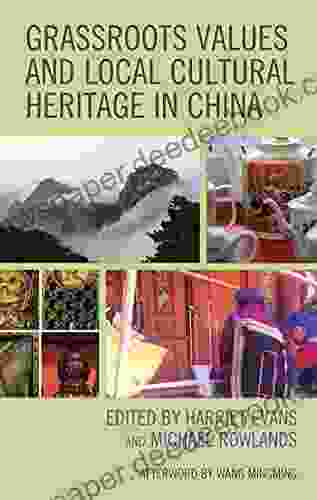
 Leo MitchellExploring Grassroots Values and Preserving Local Cultural Heritage in China:...
Leo MitchellExploring Grassroots Values and Preserving Local Cultural Heritage in China:... DeShawn PowellFollow ·2k
DeShawn PowellFollow ·2k Osamu DazaiFollow ·3.9k
Osamu DazaiFollow ·3.9k Elias MitchellFollow ·11.7k
Elias MitchellFollow ·11.7k Emilio CoxFollow ·7.4k
Emilio CoxFollow ·7.4k Ignacio HayesFollow ·19.7k
Ignacio HayesFollow ·19.7k Rick NelsonFollow ·13.8k
Rick NelsonFollow ·13.8k Earl WilliamsFollow ·17.8k
Earl WilliamsFollow ·17.8k Tennessee WilliamsFollow ·2.1k
Tennessee WilliamsFollow ·2.1k
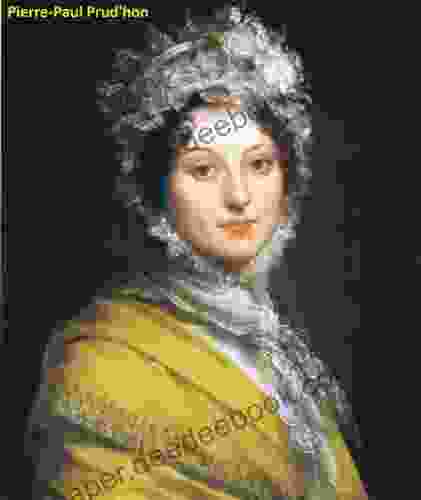
 Elias Mitchell
Elias Mitchell50 Amazing Color Paintings Of Pierre Paul Prud'Hon French...
Pierre Paul Prud'Hon (1758-1823) was a French...

 Owen Simmons
Owen SimmonsAgenda 21: A Comprehensive Guide to Glenn Beck's Baseless...
Agenda 21 is a...

 Mark Twain
Mark TwainExploring the Intricate Art of Choreography: Craft,...
Choreography, an art form that combines...

 Robert Heinlein
Robert HeinleinWhere Do Hurricanes, Typhoons, and Cyclones Come From?
A 2nd Grade Science...
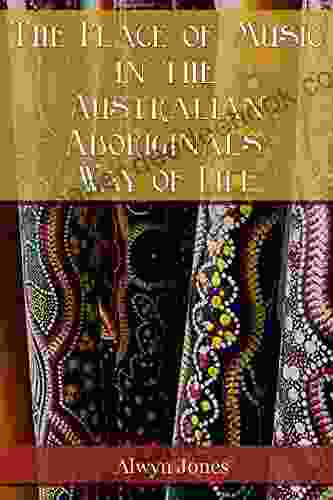
 Isaiah Price
Isaiah PriceThe Profound Place of Music in the Australian Aboriginal...
: Unveiling the Heartbeat...
4.3 out of 5
| Language | : | English |
| File size | : | 31495 KB |
| Text-to-Speech | : | Enabled |
| Screen Reader | : | Supported |
| Enhanced typesetting | : | Enabled |
| Word Wise | : | Enabled |
| Print length | : | 227 pages |
| Lending | : | Enabled |
| Paperback | : | 96 pages |
| Item Weight | : | 10.2 ounces |
| Dimensions | : | 6.61 x 0.28 x 9.69 inches |


